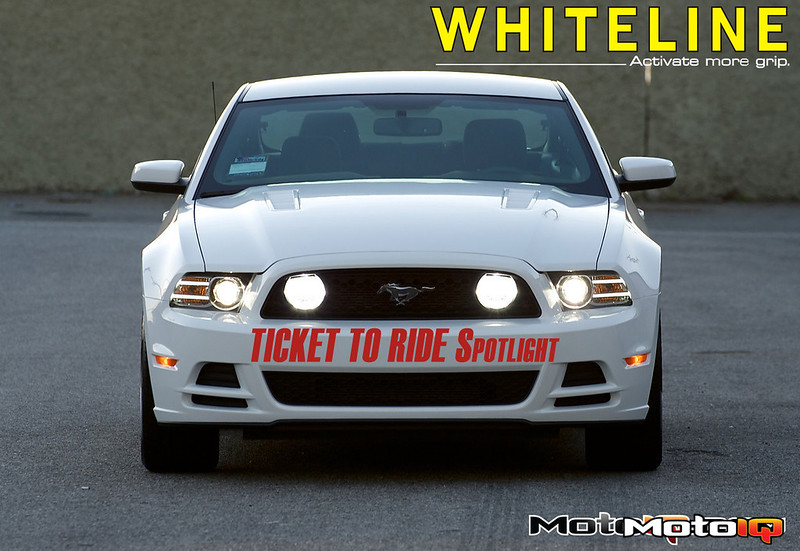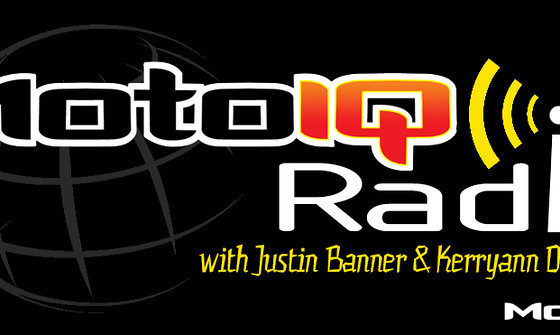
Motovicity Ticket To Ride Spotlight: Whiteline 2013 Mustang Suspension
By Justin Banner
As mentioned in the article for the BBK Tuned Shorty Headers, the S197 Mustang is being compared to the BMW 3-Series out of the box. However, what if that 3-Series isn't out of the box? What if someone has tweaked the suspension to make it better? Well, guess it's time to open up the Whiteline catalog and order some suspension parts too! In this edition of the Ticket to Ride Spotlight, we'll take a look at Whiteline Suspension's extensive parts listing for the Ford Mustang. Mustang owners are sure to give those Bimmers a little trouble now!
 | |
A common part many uni-body automobile enthusiasts add to their cars is the Strut Tower Bar. This ties the strut towers together to increase chassis rigidity and helps reduce the movement the tops of the struts can go through with high-Gs and grip. While the 2013 Mustang is more rigid than in years past, this is still one place that will help keep your tires planted to the ground. The Whiteline Strut Tower Bar works in the tight confines of the Mustang engine bay. With just enough clearance to go between the hood and the engine cover, there is no modification required to install it. | |
 | |
| The Strut Tower Bar is held in by two of the three upper strut bolts on each side. The plate is thin enough to allow the use of the OEM strut studs and have enough threads left to safely fasten the strut in place. This is important as the nuts can either back off from vibrations or even strip the studs in worse case situations if you don't have enough threads on. The bar connecting each strut tower is also bolted to the brackets for quick engine access when you need it. | |
 | |
Next is the Whiteline Front Anti-Roll Bar (or Sway Bar, or Anti-Sway Bar, depends on who you ask), which will help control roll as the 2013 Mustang carves up the autocross, track, or canyon pass. Well, carves up the canyon pass legally! The Front Anti-Roll Bar is 33mm in diameter and is made of solid spring metal. Spring metal is good as it is designed to move and flex then return to it's static design. The blades of the Anti-Roll Bar feature four positions to adjust the stiffness of the bar; the forward most hole is stiffest, the rearward most is softest. Think of it like a see-saw; the further you are from the pivot compared to the load, the easier it is to do the work, the closer, the more difficult. The Anti-Roll Bar pictured is for the 2012 and under Mustangs and will not work with the 2013. Whiteline is working on a solution and will have it before the Ticket to Ride contest is over! | |
 | |
| To help dial-in your front alignment settings Whiteline also offers a camber adjusting bolt kit. The kit allows for positive or negative 1.5 degrees of camber adjustment. The 14mm bolts also feature positive tooth locking washers to ensure the bolts won't slip under load. | |
 | |
| Moving on to the rear, Whiteline also has a 27mm Rear Anti-Roll Bar that the contest winners will receive. This will work in conjunction with the 33mm Front Anti-Roll Bar and allow the winners and Mustang owners the ability to keep the rear end roll in check. This will not work with Convertible models, though. Unlike many Rear Anti-Roll Bars on the market, the Whiteline unit points the blades to the rear of the Mustang! According to Whiteline, “BFR65Z features a unique reverse-mounted design, splitting the sprung vs unsprung weight distribution.” The bar also features the adjustable blades, just like the front. | |
 | |
| Next on the rear suspension upgrade list from Whiteline are the Rear Upper Control Arms. These 4130 Chromoly arms allow for pinion correction and help with brake and axle hop. This is done by lengthening the arm, more than what Ford did on the 2011 and up Mustangs. The rear arms are adjusted by the synthetic elastomer bushing and eccentric crush tube. The synthetic bushing allows for comfort, but does not allow the same compliance as the rubber bushing while the eccentric tube allows for adjustment without a turnbuckle adjuster, which can reduce the strength of the arm. |


